Digital Poster
AI-Based Quantification
ISMRM & ISMRT Annual Meeting & Exhibition • 10-15 May 2025 • Honolulu, Hawai'i

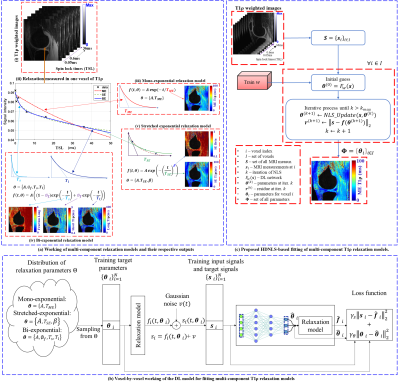 |
Computer Number: 17
3987. HDNLS:
Hybrid Deep Learning and Non-linear Least Squares-based Method
for Fast Multi-Component T1$$$\rho$$$ Mapping in the Knee Joint
D. Singh, R. R. Regatte, M. V. W. Zibetti
Bernard and Irene Schwartz Center for Biomedical Imaging, Department of Radiology, New York University Grossman School of Medicine, New York, United States
Impact: Our results indicate that HDNLS is faster and
exhibits similar behavior to NLS for whole knee joint
T1$$$\rho$$$ mapping than NLS. Thus, HDNLS is an alternative
to replace NLS and RNLS for T1$$$\rho$$$ mapping when
computational time is an issue.
|
|
 |
Computer Number: 18
3988. A
Learning-based Method for Quantifying the Fraction of
Unsaturated Fatty Acid in Bone Marrow
C. Huang, Z. Zhou, Z. Gao, V. Wong, W. Chu, W. Chen
The Chinese University of Hong Kong, Shatin, Hong Kong
Impact: The feasibility of mapping the fraction of
unsaturated fatty acid from a reduced number of imaging data
in a learning-based way is validated.
|
|
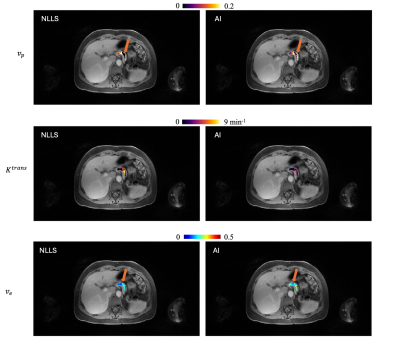 |
Computer Number: 19
3989. Deep
Learning-Enhanced Pharmacokinetic Parameter Estimation for
Low-Dose Multitasking DCE-MRI
C. Wu, L. Ma, L. Wang, S. Gaddam, H-L Lee, N. Wang, Y. Xie,
A. Christodoulou, D. Li
Cedars-Sinai Medical Center, Los Angeles, United States
Impact: Deep learning significantly improves the
precision, homogeneity, and speed of pharmacokinetic fitting
in DCE-MRI, making it an attractive alternative to NLLS.
This advancement supports more efficient, accurate, and
clinically feasible quantitative imaging for various
biomedical applications.
|
|
 |
Computer Number: 20
3990. Enhancing
prostate volume estimation: the role of artificial intelligence
compared to conventional methods
J. Shang, J. Wu, Y. Liu, P. Wu, J. Lian, X. Wang, K. Gong
Peking University First Hospital, Beijing, China
Impact: AI can automatically segment the prostate
contours and demonstrates outstanding accuracy and
reproducibility in estimating prostate volume. The
advancement also empowers the promotion of PSA density,
optimizes prostate cancer detection and ultimately offer
clinical information for improving patient outcomes.
|
|
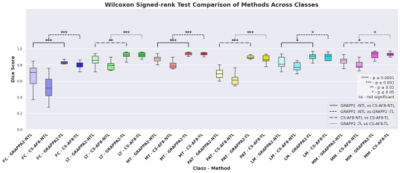 |
Computer Number: 21
3991. Clinically
Feasible Whole Knee MR T1ρ and T2 Mapping in Under 3 Minutes
with Accelerated Imaging and Automated Analysis
A. T. Minhaz, R. Lartey, Z. Zhang, J. H. Kim, M. Yang, J.
Zhang, J. Mo, W. Guo, N. Subhas, C. Winalski, X. Li
Cleveland Clinic, Cleveland, United States
Impact: This research offers a clinically feasible
accelerated qMRI and deep learning-based approach for faster
and accurate qMRI-based cartilage assessment, allowing T1ρ
and T2 mapping in under 3 minutes.
|
|
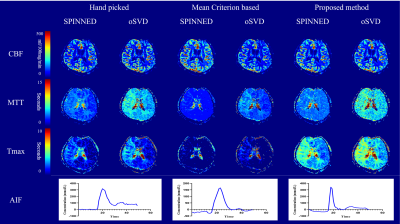 |
Computer Number: 22
3992. Automatic
arterial input function determination for DSC perfusion MRI
using simulation-based physics informed neural network
M. Asaduddin, H. Lee, E. Y. Kim, S-H Park
Korea Advanced Institute of Science and Technology(KAIST), Daejeon, Korea, Republic of
Impact: Our model was trained on a large amount of
simulation data without requiring clinical data. Moreover,
Input data consisted solely of baseline DSC-MRI, eliminating
the need for AIF selection, whether manual or automatical.
|
|
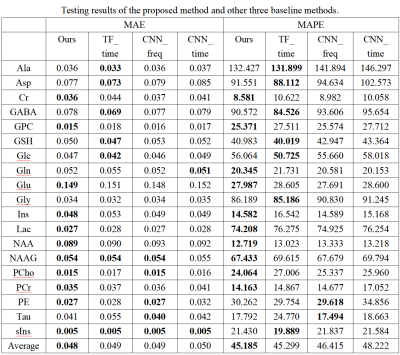 |
Computer Number: 23
3993. A
time-frequency-coupled deep learning approach for enhancing MRS
quantification
P. CAI, H. Zhang, Z. Wang, S. Zeng, J. Wang, J. Huang
The University of Hong Kong, Hong Kong, China
Impact: The time-frequency-coupled deep learning model
significantly enhances metabolite quantification accuracy
and robustness in MRS , making it a more reliable tool for
metabolic analysis, especially under varying noise
conditions, compared to conventional single-domain
approaches.
|
|
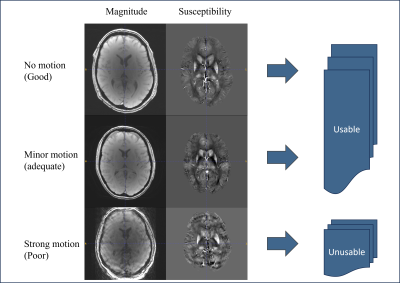 |
Computer Number: 24
3994. Metric-based
Automatic Quality Assessment for Quantitative susceptibility
mapping in UK Biobank study
Z. Xu, H-g Shin, X. Li, Y. Qiao
Johns Hopkins University School of Medicine, Baltimore, United States
Impact: This automated, metric-based quality assessment
approach for QSM QC evaluation has proven to be efficient
and effective to reduce review rate in cohort study
|
|
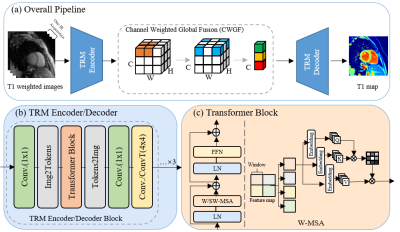 |
Computer Number: 25
3995. Cardiac
MR T1 Mapping with Shortened Acquisition Time and Window via
Deep Learning
C. Liu, H. Liao, Q. Miao, P. Hu, H. Qi
School of Biomedical Engineering & State Key Laboratory of Advanced Medical Materials and Devices, ShanghaiTech University, Shanghai, China
Impact: The proposed method can generate high-quality
cardiac T1 maps using MOLLI images acquired with reduced
acquisition time (~4s) and three to four-fold shortened
acquisition window, thereby enhancing the clinical
applicability of cardiac T1 mapping.
|
|
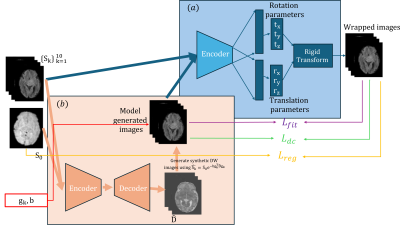 |
Computer Number: 26
3996. SMC-DTI:
Simultaneous Motion Correction and DTI parameter estimation Via
unsupervised deep learning framework
N. Kertes, M. Freiman
Technion - Israel Institute of Technology, Haifa, Israel
Impact: This study enables accurate brain microstructure
estimation from DTI data with limited gradient directions
affected by motion between acquisitions, reducing patient
discomfort, improving subject experience, and potentially
increasing imaging center throughput by shortening scan
times.
|
|
 |
Computer Number: 27
3997. Deep
learning based estimation of B1 field maps for variable flip
angle qT1 mapping
K-f Chen, P. Thuwajit, J. Weaver, B. Khmelevsky, A.
Alexander, S. Kecskemeti, D. Dean III
University of Wisconsin-Madison, Madison, United States
Impact: This method enables retrospective estimation of
qT1 from legacy variable flip angle SPGR data acquired
without B1 mapping protocols.
|
|
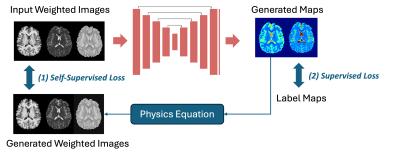 |
Computer Number: 28
3998. Weakly-Supervised
Learning for Retrospective T1 and T2 Mapping from Conventional
Weighted Brain MRI
P. Xu, S. Qiu, H-L Lee, S. Madhusoodhanan, P. Sati, Y. Xie,
D. Li
University of California, Los Angeles, Los Angeles, United States
Impact: This work enhances the practicality of
quantitative MRI by reducing data requirements and improving
generalizability, paving the way for broader clinical
adoption and efficient retrospective mapping of T1 and T2
from conventional MRI with minimal labeled data.
|
|
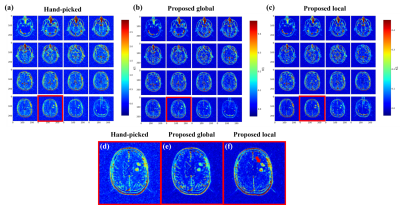 |
Computer Number: 29
3999. Automatic,
brain region-specific generation of arterial input functions for
DCE MRI using physics informed neural network
H. Lee, M. Asaduddin, S-H Park
Korea Advanced Institute of Science and Technology(KAIST), Daejeon, Korea, Republic of
Impact: In this study, we proposed a PINN method for
end-to-end automated extraction of local AIFs from multiple
tissue response functions. The proposed method can also
overcome partial volume effects with high reproducibility,
potentially improving routine clinical DCE studies.
|
|
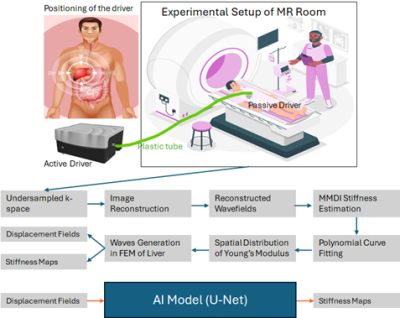 |
Computer Number: 30
4000. Curating
dataset for AI -based Stiffness Estimation in MR Elastography
Using Finite Element Modeling and Polynomial Curve Fitting
H. Iftikhar, R. Ahmad, A. Kolipaka
The Ohio State University, Columbus, United States
Impact: Stiffness of the soft tissues is an important
biomarker for detecting various pathological states. This
method enhances the MRE by enabling the precise tissue
stiffness estimation, advancing non-invasive diagnostics of
diseases like fibrosis, and cancer.
|
|
 |
Computer Number: 31
4001. One-stop
Fine-grained Brain Iron Quantification Based on Mutual
Transformer
J. He, B. Fu, Z. Xiong, L. Nie, Y. Peng, R. Wang
Guizhou Provincial People’s Hospital, Guiyang, China
Impact: The proposed mutual Transformer and research
framework can also be applied to other data fusion research,
such as combining ASL or BOLD for one-stop analysis of
cerebral blood flow or blood oxygenation, offering broad
clinical application prospects.
|
|
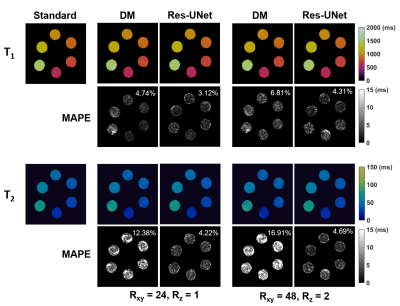 |
Computer Number: 32
4002. UNet-based
self-attention network for accurate T1/T2 mapping by magnetic
resonance fingerprinting
A. Chen, Y. Gu, Y. Zhu, Y. Chen, D. Shen, X. Yu
Case Western Reserve University, Cleveland, United States
Impact: We
present a novel deep learning-based 3D MRF method for
accurate T1 and
T2 mapping
of the entire rodent brain using highly undersampled data,
enabling dynamic MRF acquisition at higher temporal
resolution.
|
The International Society for Magnetic Resonance in Medicine is accredited by the Accreditation Council for Continuing Medical Education to provide continuing medical education for physicians.